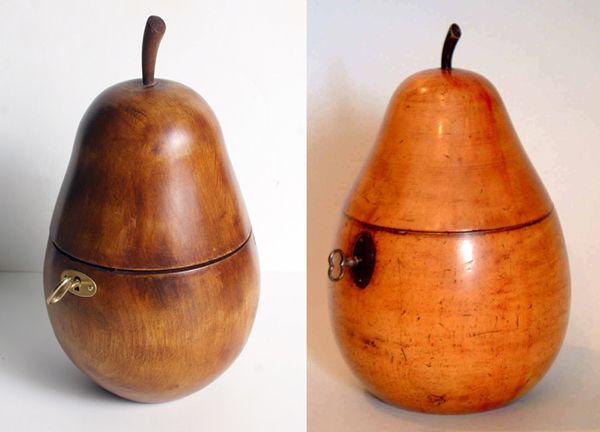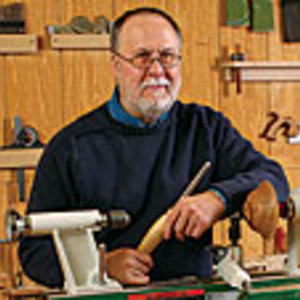
On the left, my reproduction. On the right, the Georgian original I used as a model.
It’s finished. Today I gilded the interior and screwed the hardware in place. My tea caddy isn’t an exact match for the Georgian original, but I think it’s close enough. Take a look at the photo.
To finish the piece, I gave the wood a washcoat of shellac, followed by a coat of yellow dye, a coat of Minwax cherry stain, and a generous coat of Minwax antique oak gel stain. Several coats of shellac followed, rubbed out with a gray Scotchbrite pad charged with Clapham’s beeswax polish.
The gilding was probably the easiest part of the entire project. In the end, I didn’t use gold leaf; instead, I used a mix of copper and gold mica powder, something that Peter Gedrys sent me. To say the powder is fine would be an understatement; it makes talcum powder look like beach sand. “A little goes a long way,” Peter told me. Another understatement.
Like gold leaf, the powder adheres to a size that’s brushed onto the surface then allowed to get tacky. I sprinkled on what I thought would be a few grains of powder, then worked it into the size with an artist’s brush. I managed to coat both the top and bottom, with plenty left over. Some of the powder inevitably found its way onto my hands. Call me Goldfinger.
The hardest part of attaching the hardware was aligning the two parts of the lock. The catch, which fits in the top, resembles a blunt nail. I tried to line it up with the rest of the lock, mortised into the bottom, but my aim was slightly off. I’d try to adjust it, but I’m too late. The epoxy holding the catch has already set. Oh, well.
Bottom line: Kate loved the tea caddy. That’s all that matters.























Comments
I can't believe nobody else has commented on this. Maybe it's just because I'm into period furniture, but it's little touches like this that one needs to complete an 18th century decor. Beautiful! It's on my to-do list and thanks to your work and this article, all I'll have to do is execute it!
Log in or create an account to post a comment.
Sign up Log in